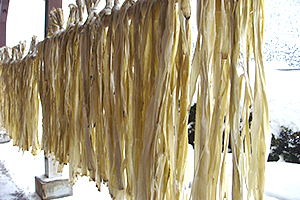Japanese washi paper and paper making is listed as ‘UNESCO Intangible Cultural Heritage’,
Three regions of Japanese Washi Paper are registered as ‘UNESCO Intangible Cultural Heritage’
- Sekishu-banshi – (Hamada-shi, Shimane Prefecture) – Ishizu Paper Sheet Technical Association · Ishiwa Washi Cooperative Association
- Honmino-Washi – (Mino City, Gifu Prefecture) – Mino City Board of Education from HP
- Hosoka Washi – (Ogawa Town, Saitama Prefecture, Higashi Chichi village) – Saitama Traditional Craft Center Homepage
Features of Handmade Japanese Paper
- Manufacturing Process
- Instead of mass production by machine, there are slight differences in manufacturing processes depending on producer and production area, each adding their own unique personality to the handmade paper.
- Durability
- Because the length of the raw material fibers is long, it is a strong, durable paper.
- High Preservation
- Because the raw material is natural fiber and no chemicals or additives are used to weaken the paper, it is less damaged and becomes highly preserved paper.
As a disadvantage, the cost of raw materials is high, approximately about 3 times higher than commercial paper. It is not mass produced and each piece is handmade, therefore making labor costs high.







